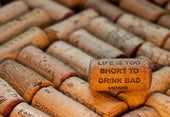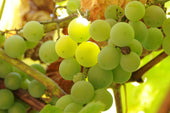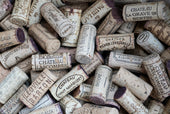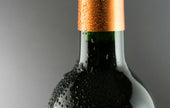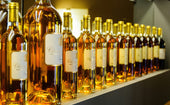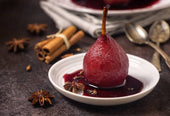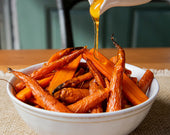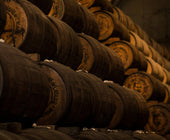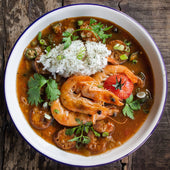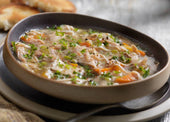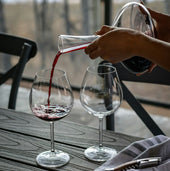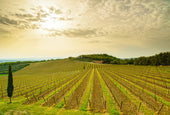
How-to Read a Wine Label

Reading a wine label can be daunting due to the variety of styles and terminologies used. However, understanding the key elements on a label can provide valuable information about the wine inside. Here’s a 10-point breakdown of the common components you'll find:
1. Producer/Winery Name
This is usually the most prominent text on the label. It identifies who made the wine, such as a winery, vineyard, or cooperative. For example, “Château Margaux” or “Robert Mondavi.”
2. Wine Name or Cuvée
Some wines have a specific name or cuvée, which can indicate a particular blend, or a special line produced by the winery. This is often more prominent with New World wines. For example, “Opus One” or “Reserve Cabernet Sauvignon.”
3. Region/Appellation
The region indicates where the grapes were grown. It can be a broad area like “California” or a specific appellation like “Chianti Classico” or “Napa Valley.” In many Old-World wines, the region name can also indicate specific grape varieties used in the wine.
4. Vintage Year
The vintage year tells you when the grapes were harvested. It’s crucial as it reflects the weather conditions of that year, which can affect the wine's quality and character. If there’s no vintage year on the label, the wine is likely a non-vintage blend, meaning it’s made from grapes harvested in different years.
5. Grape Variety/Varietal
This indicates the type(s) of grape(s) used to make the wine, such as “Chardonnay,” “Merlot,” or “Syrah.” Old World labels, like those from France or Italy, often don’t list the grape variety but instead use the region name to indicate it (e.g., “Chablis” means Chardonnay, “Barolo” means Nebbiolo).
6. Alcohol Content
Typically displayed as a percentage (e.g., 13.5% ABV). It can give clues about the wine’s body and style; for example, higher alcohol often indicates a fuller-bodied wine.
7. Classification/Quality Level
In some regions, there are classifications that indicate the quality level of the wine.
1. Producer/Winery Name
This is usually the most prominent text on the label. It identifies who made the wine, such as a winery, vineyard, or cooperative. For example, “Château Margaux” or “Robert Mondavi.”
2. Wine Name or Cuvée
Some wines have a specific name or cuvée, which can indicate a particular blend, or a special line produced by the winery. This is often more prominent with New World wines. For example, “Opus One” or “Reserve Cabernet Sauvignon.”
3. Region/Appellation
The region indicates where the grapes were grown. It can be a broad area like “California” or a specific appellation like “Chianti Classico” or “Napa Valley.” In many Old-World wines, the region name can also indicate specific grape varieties used in the wine.
4. Vintage Year
The vintage year tells you when the grapes were harvested. It’s crucial as it reflects the weather conditions of that year, which can affect the wine's quality and character. If there’s no vintage year on the label, the wine is likely a non-vintage blend, meaning it’s made from grapes harvested in different years.
5. Grape Variety/Varietal
This indicates the type(s) of grape(s) used to make the wine, such as “Chardonnay,” “Merlot,” or “Syrah.” Old World labels, like those from France or Italy, often don’t list the grape variety but instead use the region name to indicate it (e.g., “Chablis” means Chardonnay, “Barolo” means Nebbiolo).
6. Alcohol Content
Typically displayed as a percentage (e.g., 13.5% ABV). It can give clues about the wine’s body and style; for example, higher alcohol often indicates a fuller-bodied wine.
7. Classification/Quality Level
In some regions, there are classifications that indicate the quality level of the wine.
For example:
France: “Grand Cru,” “Premier Cru,” “AOC” (Appellation d’Origine Contrôlée)
Italy: “DOCG,” “DOC,” “IGT”
Spain: “DO,” “DOCa,” “Vino de Pago”
8. Estate Bottled or Bottled By
Estate Bottled: Indicates the wine was made and bottled on the same estate where the grapes were grown. Bottled By: The wine was made by one entity and bottled by another. It can give insight into the production process.
9. Volume
Indicates the amount of wine in the bottle, usually displayed in milliliters (ml) or liters (L). The standard bottle size is 750 ml.
10. Other Information
Sulfite Declaration: “Contains Sulfites” is a mandatory warning for wines with more than 10 parts per million of sulfur dioxide.
Organic/Biodynamic Certifications: Indicates if the wine is made from organically or biodynamically grown grapes.
Geographical Indications: Protected terms like “Old Vines” or “Single Vineyard” can also appear on the label, offering additional insight into the wine’s origin and production.
Understanding these elements will help you make informed choices and appreciate the wine's origins, style, and quality.
Contributed by Blake Leland, Sommelier for Plume Ridge Bottle Shop.






